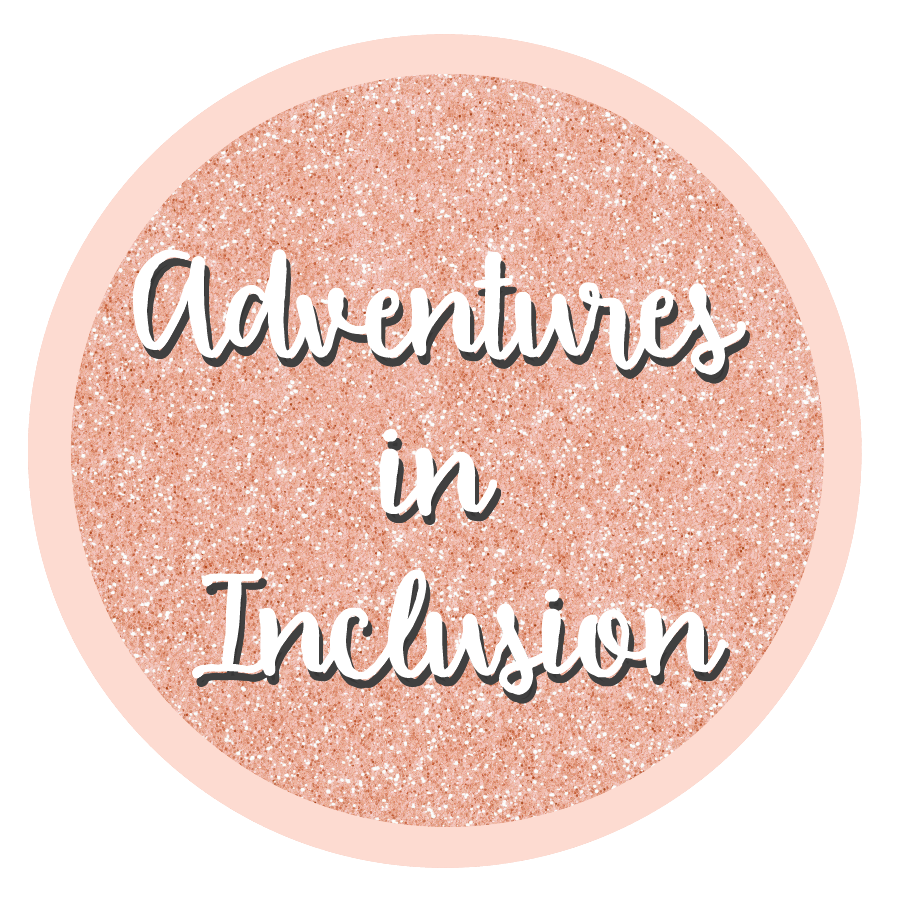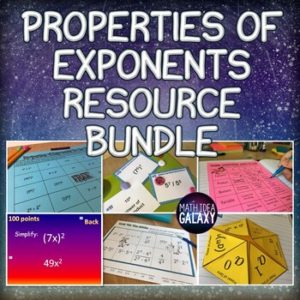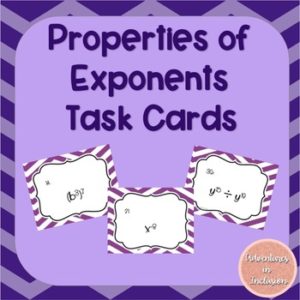
Using Stations to Teach Exponent Laws
Often, teaching inclusion math in middle school, it is difficult to keep all students moving at the same pace. We faced this challenge recently when teaching our unit on exponent laws.
We begin teaching exponent laws by teaching the different laws, product of powers, quotient of powers, power of a power, negative exponent rules, and the power of zero.
On the first day, I provide my students who struggle in math with these cheat sheets of the rules, Power of Exponents. Throughout the unit, if anyone else gets our attention, we’ll give them one also. We then spend a few days giving students plenty of practice and reviewing all of the different problems with them. During this time we provide them with individual attention as needed.
The Problem
Once we feel as though it is time to move on and begin introducing coefficients, we do. But this year there was a snag. We were noticing that while many of the students were ready to move on, some weren’t.
To decipher what was happening we gave them a quick, ungraded assessment. I gave the students a six-question quiz to see how they’d do.
In one of our classes, the lowest score was a 3, and most students had a 5 out of 6. But, in our other class, the smaller class which usually does better, there were a significant number of ones and twos!
Cue to a moment of panic and the realization that we need more time.
The Plan
We decided that the best way to combat this issue was to have centers. For our class that was doing well, we had six centers that the students rotated through.
For our class that had some struggling, we pulled the group that had three or less right on the assessment into a small group for remediation. I took this group to my classroom where we went back to basics.
The Centers
I had not made enough exponent products that would be useful to us, so we went to Pinterest.
In my adventures, I found this bundle, Properties of Exponents Activities and Games.
One center was a foldable from this product where the students had to cut out the shape and figure out which rule and example went with which graphic.
We also used the mazes from this product as another center where the students could work together to solve each of the mazes. We left them the answer key so that they could check when they were finished.
A third center was the puzzle from this product, which I cut out and laminated. Any excuse to laminate is a good thing in my book!
We also had a fourth center where the students would watch a YouTube video about the laws, which also introduced the coefficient and how it affected the operations.
The fifth center was additional practice with task cards that I made that did not include coefficients. Properties of Powers Exponents. I also laminated these because I LOVE laminating!
And the final center was a teacher run station where we could work with them on specific topics based on the needs of the group.
The Results
The students were engaged in this lesson. My co-teacher and I had been trying to find a way to incorporate centers into our class for a while, and this was our first attempt. We did learn different things about the specific classes and ways that we will do differently in the future.
For example, the class where we chose the groups went better than the class where they chose their groups.
Even though we gave explicit instructions, there was still a lot of confusion, and we should have put table tents with the instructions at the centers themselves as back up.
All in all, it was a great lesson, and the group of students who were pulled for remediation all left asking if we could do that again soon. Which is unexpected for eighth-graders to want to be pulled out of the classroom!
See also:
Why You Should Be Using Centers in Your Secondary Classroom
Using Reference Sheets to Support Your Inclusion Students
Get your free IEP summary page!

Subscribe to get our latest content by email.








